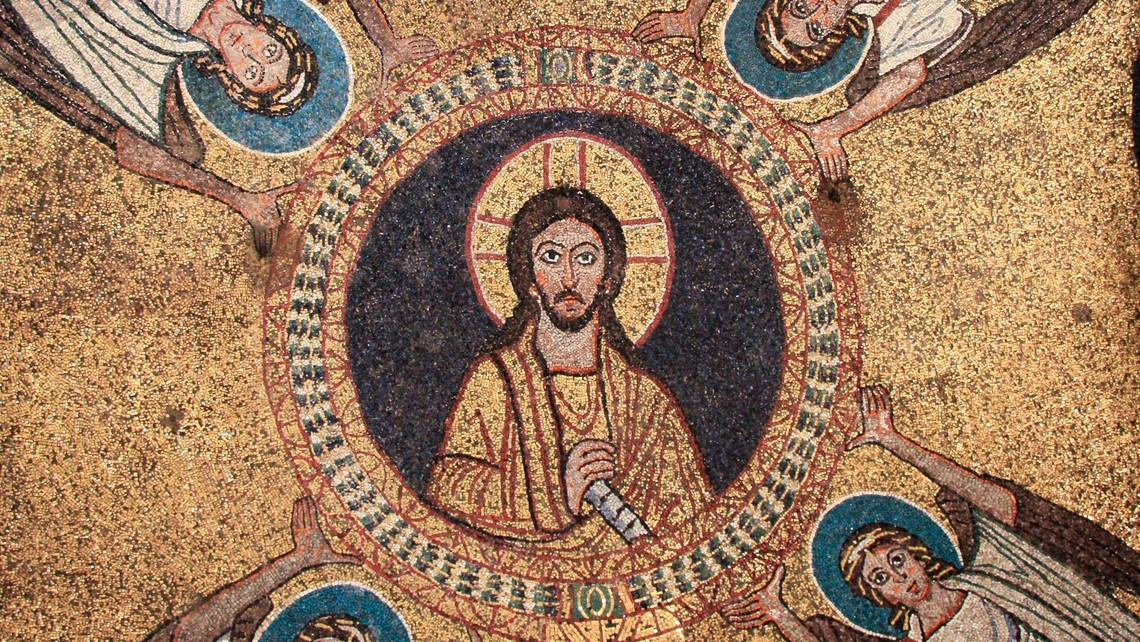
The great doctor of the Church St. Francis De Sales placed great emphasis on the importance of reaching the hearts of souls for Christ. His infamous quote: Heart speaks to Heart, encompasses a pedagogical methodology that requires a simultaneous demonstration of love for the Word of God and the Creed. When I mentioned this to a particular group of evangelists, they disagreed with my premise. The reason for them was quite simple; catechesis was nothing more than the handing on of information that had nothing to do with the journey of evangelization, the development of a personal relationship with Jesus Christ or the proclamation of the Gospel. Amused by their responses, I realized that a brief catechesis on catechesis was in order.
The nature of Catechesis
The book of Hebrews tells us that it is impossible to please God without faith, since anyone who comes to him must believe that he exists, and that he rewards those who try to find him.[1] This particular verse reveals several important tenets on the role of catechesis in a person’s journey toward Christ and His Church.
First, faith is a gift that comes from God where man can come to know God through natural reason.[2] The study and practice of catechetics-catechesis is to help the person discover, identify and investigate a relationship with Jesus Christ. Catechesis explains the way God desires us to know Him through His son Jesus Christ and involves the transmission of the logos Jesus Christ Himself. Jesus the Divine Teacher is the nature and premise of catechetical instruction and this point cannot be ignored because of the intent to guide a person toward an intimate relationship with Him.
The premise of Catechesis
Catechetical instruction is guided by a Trinitarian, Christocentric principle that all of God’s children are to discover and develop an active and intimate relationship with Jesus Christ. The person to whom catechetical instruction is directed involves an initial investigation of the Catholic faith to develop trust and understanding of who the person is as a child of God made in His image and likeness.
Catechesis is not the dissemination of doctrinal information for the sake of memorization. Nor it is an examination process to complete a Church requirement. Catechetical formation is the indispensable application of a pedagogy and methodology rooted in Jesus Christ. It is an education in the faith for children, young people, and adults which includes especially, the teaching of Christian doctrine imparted, generally speaking, in an organic and systematic way, with a view to imitating the hearers into the fullness of Christian life.[3]
The Catechist in this scenario serves first and foremost as a witness of faith and not solely a dispenser of information. Trust and openness to catechetical instruction is tantamount toward effective catechesis because it involves a personal witness of faith and the application of the creed in this faith. St. John Paul II reminds us that the Church has always considered catechesis one of her primary tasks.[4] He goes on to provide us with an actual blueprint on what sound catechetical instruction looks like:
- The initial proclamation of the Gospel or missionary preaching through the kerygma to arouse faith.
- Apologetics or examination of the reasons for beliefs.
- Experience of Christian living.
- Celebration of the sacraments.
- Integration onto the ecclesial community.
- Apostolic and missionary witness[5]
Personal experience versus doctrine
St. John Paul II was very clear in his description and application of catechesis within an overall process of evangelization and creedal instruction in that both are intimately bound together and actually are applied simultaneously. Unfortunately, this methodological approach was ignored after the onset of the Second Vatican Council by way of an experiential, personalist view of the Catholic faith. Christ was not Incarnational but instead was your friend, the resurrection was more important than the crucifixion, the moral life was not based on the Ten Commandments but instead on works of service and Christian prayer was associated with a personalist perspective that eschewed the Trinity and Christ Himself as the focus of our devotion and communciation with Him.
Any attempt to initiate a doctrinal ethos in catechesis and catechetical instruction was met with a pervasive attitude of an outdated form of instruction that was viewed simply as a set rules and regulations that inhibited a person’s ability to believe and worship Christ as the person saw fit. This last point may explain why the sacred liturgy was transformed from an active participation in the paschal mystery and reception of the true presence of Christ in the Holy Eucharist to a sacramenal novelty that would involved a change in the words of consecration or the actual use of baked bread in the Mass. Christian Doctrine, appropriately understood is nourishment provided by Christ to the faithful. It is the fruit of the Word of God that strengthens our identity with Christ through an intimate relationship between what Christ professed and what He did.
An authentic Catechetical narrative
The centrality of Christ’s catechetical instruction was for us to know the Father through Him. This means that the task of catechesis is to communicate God’s salvific plan for humanity and to introduce this plan in a loving and sincere way that provides and atmosphere of trust and acceptance for anyone who desires a relationship with Christ. Doctrinal instruction is not meant to solely be remembered and regurgitated without conviction, the universal methodological approach of catechetical formation is to help the person become gradually aware that God loves them and that it is possible to have a loving relationship with Him. The Catechism of the Catholic Church describesthe entire catechetical process in the following manner:
In catechesis Christ, the Incarnate Word and Son of God, is taught-everything else is taught with reference to him-and it is Christ alone who teaches-anyone else teaches to the extent that he is Christ’s spokesman, enabling Christ to teach with his lips[6]
In conclusion, St. John in his first Epistle cogently articulates the nature, premise and genuine narrative of what authentic catechesis looks like;
That which was from the beginning, which we have heard, which we have seen with our eyes, which we have looked upon and touched with our hands, concerning the word of life-the life was made manifest, and we saw it, and testify to it, and proclaim to you the eternal life which was with the Father and was made manifest to us that which we have seen and heard we proclaim also to you, so that you may have fellowship with us, and our fellowship is with the Father and with His Son Jesus Christ. And we are writing this that our joy may be complete.[7]






